Unit 3 The world of science Using language课件 (共40张,内嵌视频)2024-2025学年高中英语外研版(2019)必修第三册
文档属性
| 名称 | Unit 3 The world of science Using language课件 (共40张,内嵌视频)2024-2025学年高中英语外研版(2019)必修第三册 | 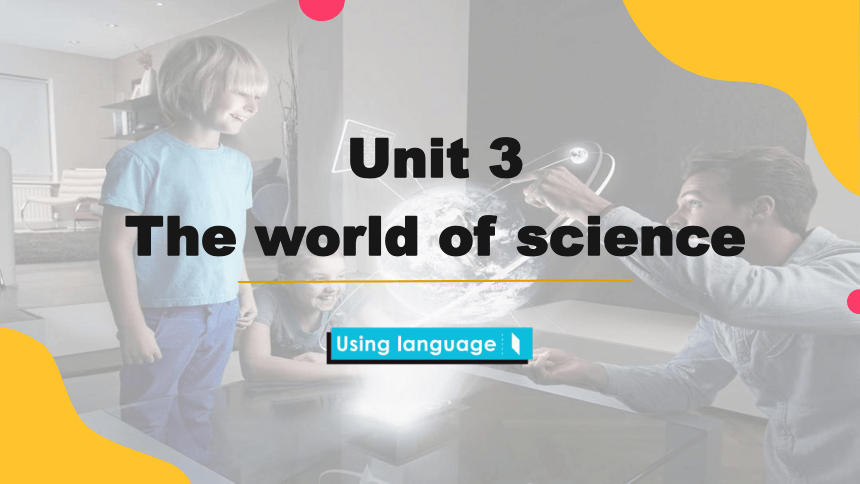 | |
| 格式 | pptx | ||
| 文件大小 | 46.0MB | ||
| 资源类型 | 教案 | ||
| 版本资源 | 外研版(2019) | ||
| 科目 | 英语 | ||
| 更新时间 | 2024-12-24 19:34:24 | ||
图片预览

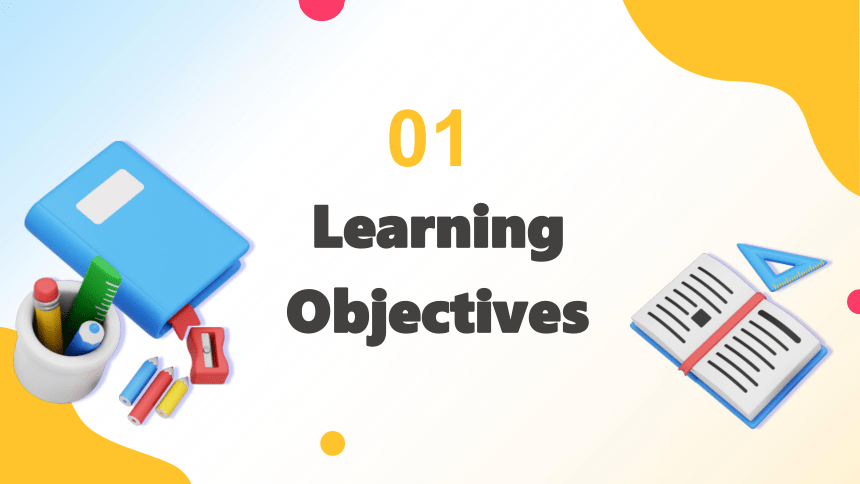
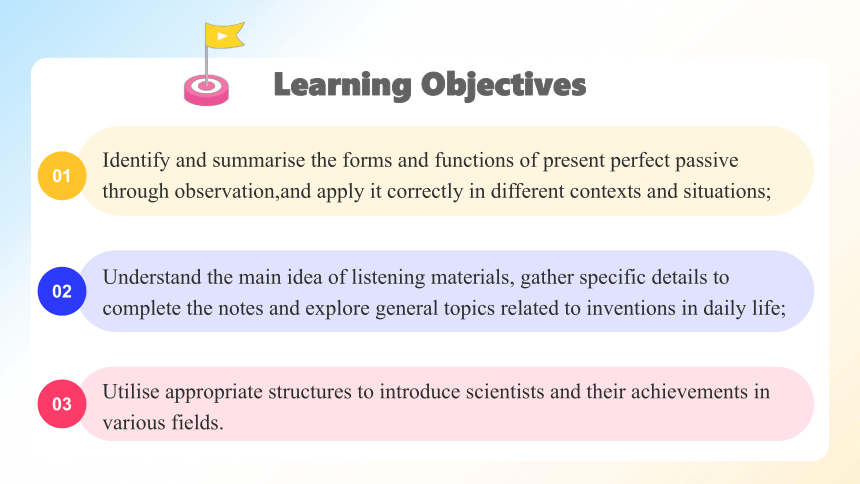
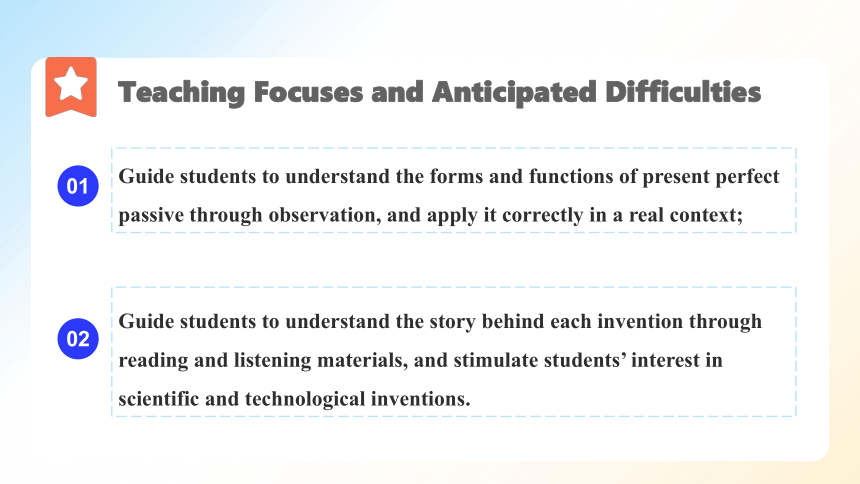
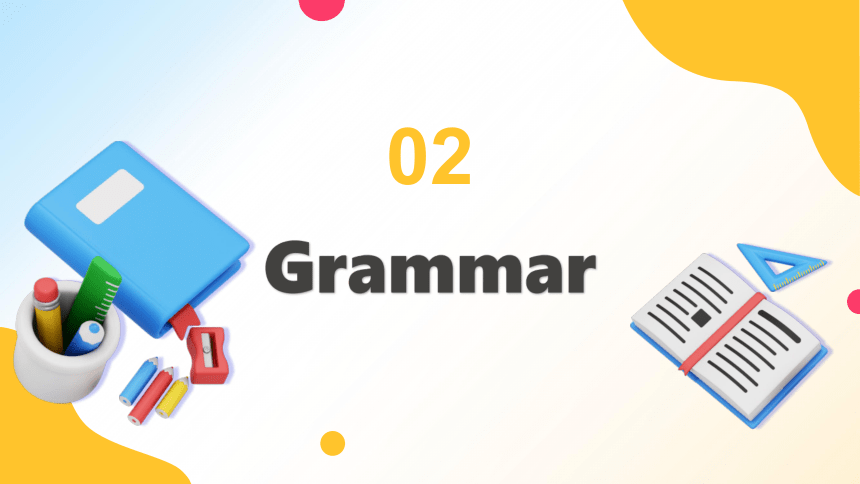
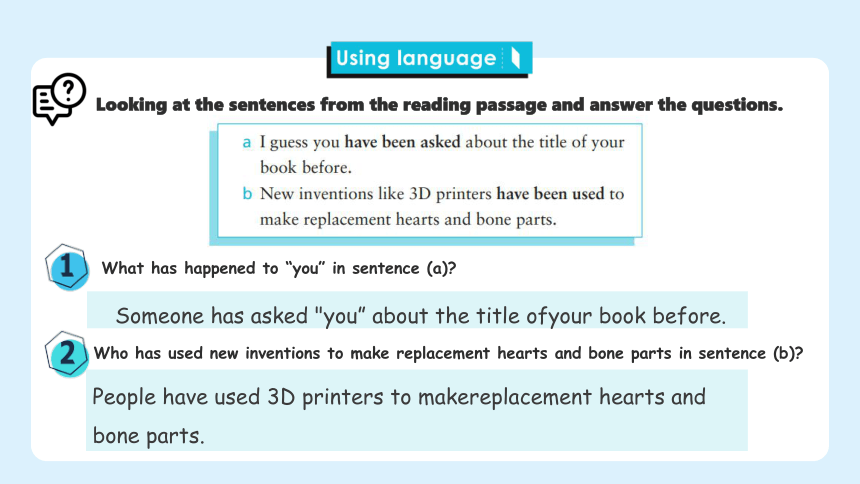

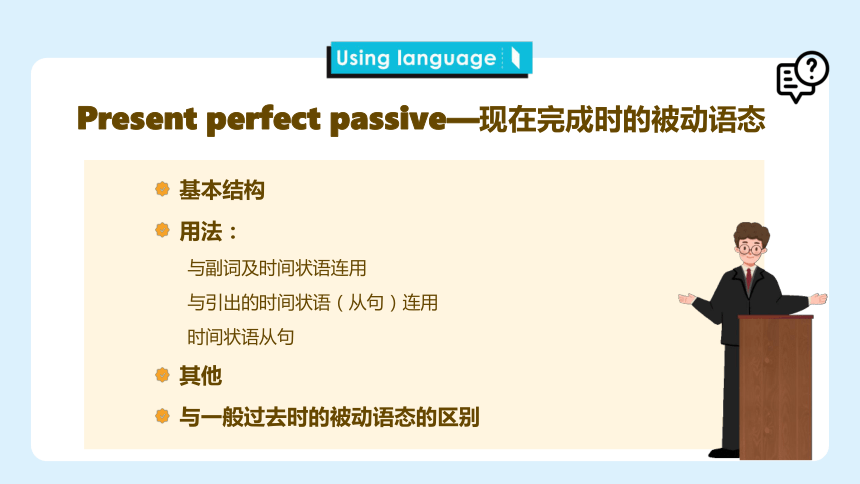
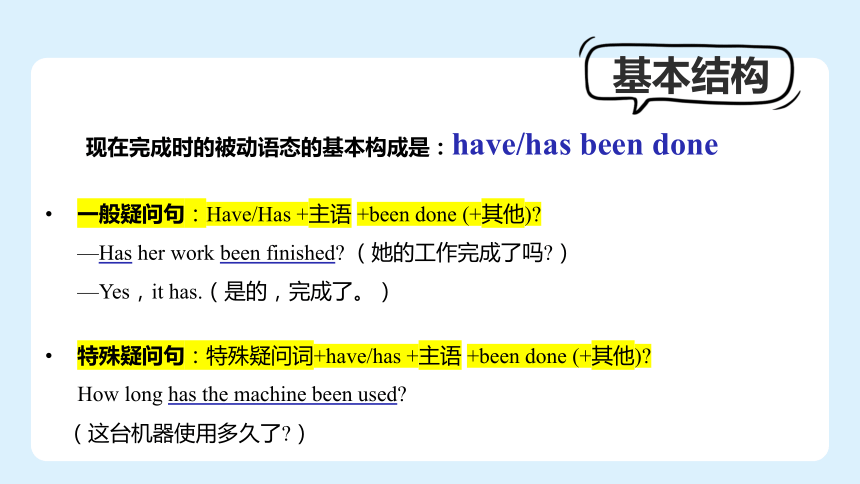

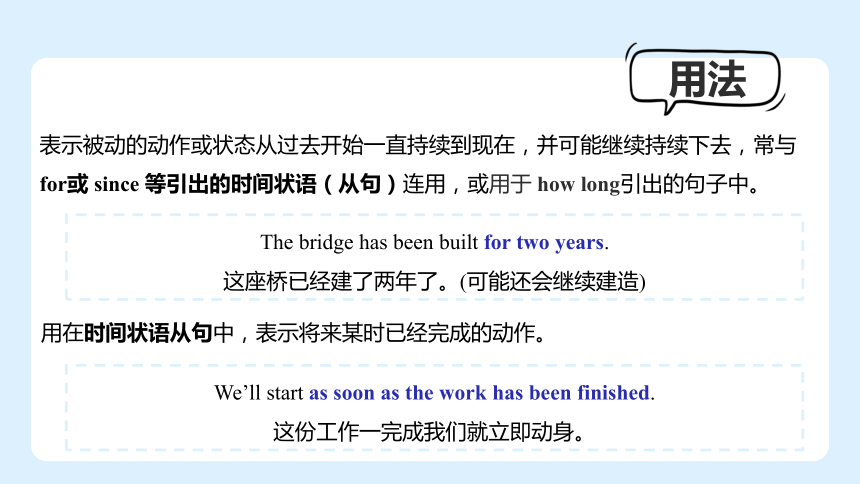
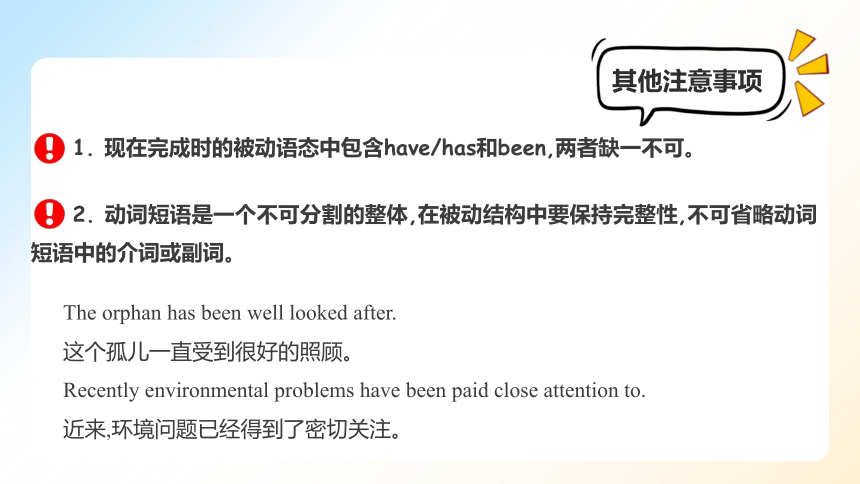
文档简介
(共40张PPT)
Unit 3
The world of science
Learning Objectives
01
Learning Objectives
01
Identify and summarise the forms and functions of present perfect passive through observation,and apply it correctly in different contexts and situations;
03
Utilise appropriate structures to introduce scientists and their achievements in various fields.
02
Understand the main idea of listening materials, gather specific details to complete the notes and explore general topics related to inventions in daily life;
Guide students to understand the forms and functions of present perfect passive through observation, and apply it correctly in a real context;
Guide students to understand the story behind each invention through reading and listening materials, and stimulate students’ interest in scientific and technological inventions.
01
02
Teaching Focuses and Anticipated Difficulties
Grammar
02
Looking at the sentences from the reading passage and answer the questions.
What has happened to “you” in sentence (a)
Who has used new inventions to make replacement hearts and bone parts in sentence (b)
People have used 3D printers to makereplacement hearts and bone parts.
Someone has asked "you” about the title ofyour book before.
Looking at the sentences from the reading passage and answer the questions.
What is the difference between the two groups of sentences
In the first group, the words in bold show the use of the passive form with the subiects, while in the second group, the words in bold show theuse of the active form with the subiects.
Why does the author choose to use the passive form instead of the active form in the reading passage
The author chooses to use the passive forminstead of the active form to emphasise whathas been done, rather than who or what doesthe action.
Present perfect passive—现在完成时的被动语态
基本结构
用法:
与副词及时间状语连用
与引出的时间状语(从句)连用
时间状语从句
其他
与一般过去时的被动语态的区别
基本结构
现在完成时的被动语态的基本构成是:have/has been done
一般疑问句:Have/Has +主语 +been done (+其他)
—Has her work been finished (她的工作完成了吗 )
—Yes,it has.(是的,完成了。)
特殊疑问句:特殊疑问词+have/has +主语 +been done (+其他)
How long has the machine been used
(这台机器使用多久了 )
用法
表示被动的动作在说话前已经完成,强调过去的动作对现在造成的影响或产生的结果。通常与already,yet,never,recently等副词及时间状语 so far,by now,up till now 等连用。
The room has already been cleaned.
这个房间已经被打扫干净了。(现在已经不用打扫房间了)
用法
表示被动的动作或状态从过去开始一直持续到现在,并可能继续持续下去,常与for或 since 等引出的时间状语(从句)连用,或用于 how long引出的句子中。
The bridge has been built for two years.
这座桥已经建了两年了。(可能还会继续建造)
用在时间状语从句中,表示将来某时已经完成的动作。
We’ll start as soon as the work has been finished.
这份工作一完成我们就立即动身。
1. 现在完成时的被动语态中包含have/has和been,两者缺一不可。
2. 动词短语是一个不可分割的整体,在被动结构中要保持完整性,不可省略动词短语中的介词或副词。
The orphan has been well looked after.
这个孤儿一直受到很好的照顾。
Recently environmental problems have been paid close attention to.
近来,环境问题已经得到了密切关注。
其他注意事项
区分
与一般过去时的被动语态的区别
一般过去时的被动语态:
表示被动的动作发生在过去的某个时刻,其结果对现在没有影响 过
现在完成时的被动语态:
现在完成时的被动语态的动作或状态尽管发生在过去,但侧重说明该动作或状态对现在造成的影响或结果
My mobile phone has got repaired by my father.
我的手机已经被我爸爸修好了。(与现在有关,现在手机可以使用了。)
My mobile phone was repaired by my father.
我的手机被我爸爸修好了。(与现在无关,只是曾经发生过这样的事情,不能判断手机现在是否还能使用。)
Exercise
1. 中国的电脑芯片制造已经取得了很大的进步。
Great progress ___________________ in the production of computer chips in China.
2. 已经有人警告他,他可能在和生意伙伴打交道时遇到麻烦。
He ____________________ that he might have trouble dealing with his
business partner.
has been made
has been warned
Exercise
3. 他已经被告知这些题的答案了,但他仍然会犯错误,这让数学老师很失望。
He _____________ the answers to the problems, but he still makes mistakes, making the maths teacher very disappointed.
4. 我女儿被北京大学录取了,这让我们很自豪。
My daughter ________________ to Peking University, which makes us very proud.
5. 这部电影已经上映,很可能在春节期间大卖。
The film _________________ and it is likely to be a hit during the spring festival.
has been told
has been admitted
has been released
1. beyond
beyond one's control
beyond one's imagination
beyond description
beyond expression
beyond compare
练习:The scenery along the lake is beautiful ___________________ (无法形容).
beyond expression
超出某人的控制,不受某人的控制
超乎某人的想象
无法表达
无法形容
无与伦比
2. significant
significance
be of great/much significance
be of no/little significance
have great/no significance (for. . . )
attach (great) significance to. . .
练习:
Something _____________ (significance) is happening to the world population—it is aging.
significant
n. 重要性,意义
重要的,有重大意义的
无关紧要的
(对……)很重要/不重要
(非常)重视……
3. origin
the origin of. . .
in origin
have one's origins in. . .
by origin
original
originally
originate
练习:
The jeans today have changed very slightly from their _________ (origin) design.
original
……的起源/起因
在来源上
起源于……
籍贯
adj. 原来的,起初的;独创的
adv. 原来,起初
vi.起源,发端于;vt. 创立,创建
4. cure
a cure for. . .
cure sth.
cure sb.
cure sb. of sth.
练习:
Medical research often makes use ________ the forests' plant and animal life, and the destruction of such species could prevent researchers from finding cures _______ certain diseases.
of
……的疗法/措施
治好……疾病
治好某人
使某人从某种疾病中痊愈
for
5. affect & effect
affect is usually used as a verb meaning “to influence or produce a change in something.”
effect is generally used as a noun, and refers to the result of a change (have an effect on…)
练习:
Does the Internet have an ________ on children’s behavior
The change in climate may ________ your health.
effect
affect
Within the next 80 years, our lives may be changed beyond recognition by 3D printing. It has already affected many things in our lives, right down to the food we eat.
For instance, some restaurants in London have served 3D-printed hamburgers to customers.
Activity 2
Rewrite the underlined parts using the present perfect passive.
3D-printed hamburgers have been served to customers in some restaurants in London.
Many things in our lives have already been affected.
But perhaps the most significant success that people have achieved to date is in medicine. They have made human body parts, including a beating heart, with 3D printing technology.
And it is not just humans who are benefiting—in Brazil, people have given a new3D-printed shell to a turtle injured in a forest fire!
Activity 2
Rewrite the underlined parts using the present perfect passive.
But perhaps the most significant success that has been achieved to date is in medicine. Human body parts, including a beating heart have been made with 3D printing technology
But perhaps the most significant success that has been achieved to date is in medicine. Human body parts, including a beating heart have been made with 3D printing technology
Activity 3
Imagine you are Dr Moore. Look at the pictures and tell the police about the damage and loss to your lab. Use the present perfect passive where appropriate.
The lock on the door has been broken.
The window has been broken.
Two laptops have been stolen.
Beakers and test tubes have been destroyed.
The book case has been opened, and some files have been taken away while others have been thrown everywhere.
The robot has been damaged.
Activity 4
Look at the pictures and answer the questions.
1 What do you know about these careers
2 What famous scientists can you name in these fields
Activity 5
Describe the situations with the words you underlined in Activity 4.
Guo Shoujing(1231—1316) was a famous Chinese 1.________ of the Yuan Dynasty. He invented twelve new instruments to study stars and planets. He also developed a calendar which is as accurate as the Gregorian calendar. A mountain on the Moon and a minor planet are named after him.
astronomer
Activity 5
Describe the situations with the words you underlined in Activity 4.
British 2.____________ Charles Darwin(1809—1882) is best known for his work On the Origin of Species,in which he explains changes in species due to natural selection.His ideas deeply influence our understanding of the relationship between humans and nature.
biologist
Activity 5
Describe the situations with the words you underlined in Activity 4.
Li Daoyuan(ca 466—527) was a famous writer and 3.________________ of the Northern Wei Dynasty.He did field research across China and studied more than a thousand rivers and streams,along with the landscape,history and culture of the surrounding areas.
geographer
Activity 5
Describe the situations with the words you underlined in Activity 4.
Marie Curie (1867—1934) was a world-famous 4._____________, and was first awarded the Nobel Prize in 1903 for her extraordinary work on radioactivity. She was also regarded as a brilliant 5.____________, and was again awarded the Nobel Prize in 1911 for the isolation of pure radium.
geographer
chemist
Activity 5
Describe the situations with the words you underlined in Activity 4.
Chen Jingrun (1933—1996) was one of the world’s leading 6._____________.His work on Chen’s Theorem made an important advance towards proving Goldbach’s Conjecture,the greatest unsolved problem in number theory.
mathematicians
Activity 7
Work in pairs. Think about other careers in science and discuss what interests you most.
I’m interested in the work of a(n)…because…
生态学家 ecologist
社会学家 sociologist
心理学家 psychologist
计算机学家 computer scientist
……
Have you ever thought about inventing something
Have you ever thought about inventing something for some patients
Listen to the conversation and number the pictures in the correct order.
1
2
3
4
5
Listen to the conversation and number the pictures in the correct order.
a pair of socks designed for people
with Alzheimer’s disease
a student from New York
His grandfather
A warning
gets out of bed
Activity 9
Work in pairs. Act out the conversation about the invention of the telephone.
student A
You are going to give a presentation about the invention of the telephone. As part of your research, you speak to Student B who has just read a book about it. Ask him / her questions to find out more information. Information you’d like to know:
the inventor
year of invention
the inventing process
the first phone call
other interesting things about the invention
Activity 9
student B
You’ve just read a book about the invention of the telephone. Student A, who is going to give a presentation on the same topic, asks you for information.
Inventor: Alexander Graham Bell
Invention created in: 1876
Background: Bell was a teacher at a school for the deaf. He tried to invent a machine to send messages over an electronic wire. This eventually led to the idea of a telephone. Later, with his assistant, he created a device to produce and receive sound waves using electrical signals.
First phone call: On 10 March 1876, Bell made the first clear and complete phone call to his assistant, saying, “Mr Watson–come here–I want to see you.”
Other information: Bell never had a telephone in his study, where he wanted to be alone with his thoughts and work.
Summary
03
教学实施方案
Homework
04
Homework
1. Work in pairs. Think of another situation and
have a similar conversation.;
2. summarise what we have learnt in this lesson;
3. prepare for the next lesson
See you
next class!
Unit 3
The world of science
Learning Objectives
01
Learning Objectives
01
Identify and summarise the forms and functions of present perfect passive through observation,and apply it correctly in different contexts and situations;
03
Utilise appropriate structures to introduce scientists and their achievements in various fields.
02
Understand the main idea of listening materials, gather specific details to complete the notes and explore general topics related to inventions in daily life;
Guide students to understand the forms and functions of present perfect passive through observation, and apply it correctly in a real context;
Guide students to understand the story behind each invention through reading and listening materials, and stimulate students’ interest in scientific and technological inventions.
01
02
Teaching Focuses and Anticipated Difficulties
Grammar
02
Looking at the sentences from the reading passage and answer the questions.
What has happened to “you” in sentence (a)
Who has used new inventions to make replacement hearts and bone parts in sentence (b)
People have used 3D printers to makereplacement hearts and bone parts.
Someone has asked "you” about the title ofyour book before.
Looking at the sentences from the reading passage and answer the questions.
What is the difference between the two groups of sentences
In the first group, the words in bold show the use of the passive form with the subiects, while in the second group, the words in bold show theuse of the active form with the subiects.
Why does the author choose to use the passive form instead of the active form in the reading passage
The author chooses to use the passive forminstead of the active form to emphasise whathas been done, rather than who or what doesthe action.
Present perfect passive—现在完成时的被动语态
基本结构
用法:
与副词及时间状语连用
与引出的时间状语(从句)连用
时间状语从句
其他
与一般过去时的被动语态的区别
基本结构
现在完成时的被动语态的基本构成是:have/has been done
一般疑问句:Have/Has +主语 +been done (+其他)
—Has her work been finished (她的工作完成了吗 )
—Yes,it has.(是的,完成了。)
特殊疑问句:特殊疑问词+have/has +主语 +been done (+其他)
How long has the machine been used
(这台机器使用多久了 )
用法
表示被动的动作在说话前已经完成,强调过去的动作对现在造成的影响或产生的结果。通常与already,yet,never,recently等副词及时间状语 so far,by now,up till now 等连用。
The room has already been cleaned.
这个房间已经被打扫干净了。(现在已经不用打扫房间了)
用法
表示被动的动作或状态从过去开始一直持续到现在,并可能继续持续下去,常与for或 since 等引出的时间状语(从句)连用,或用于 how long引出的句子中。
The bridge has been built for two years.
这座桥已经建了两年了。(可能还会继续建造)
用在时间状语从句中,表示将来某时已经完成的动作。
We’ll start as soon as the work has been finished.
这份工作一完成我们就立即动身。
1. 现在完成时的被动语态中包含have/has和been,两者缺一不可。
2. 动词短语是一个不可分割的整体,在被动结构中要保持完整性,不可省略动词短语中的介词或副词。
The orphan has been well looked after.
这个孤儿一直受到很好的照顾。
Recently environmental problems have been paid close attention to.
近来,环境问题已经得到了密切关注。
其他注意事项
区分
与一般过去时的被动语态的区别
一般过去时的被动语态:
表示被动的动作发生在过去的某个时刻,其结果对现在没有影响 过
现在完成时的被动语态:
现在完成时的被动语态的动作或状态尽管发生在过去,但侧重说明该动作或状态对现在造成的影响或结果
My mobile phone has got repaired by my father.
我的手机已经被我爸爸修好了。(与现在有关,现在手机可以使用了。)
My mobile phone was repaired by my father.
我的手机被我爸爸修好了。(与现在无关,只是曾经发生过这样的事情,不能判断手机现在是否还能使用。)
Exercise
1. 中国的电脑芯片制造已经取得了很大的进步。
Great progress ___________________ in the production of computer chips in China.
2. 已经有人警告他,他可能在和生意伙伴打交道时遇到麻烦。
He ____________________ that he might have trouble dealing with his
business partner.
has been made
has been warned
Exercise
3. 他已经被告知这些题的答案了,但他仍然会犯错误,这让数学老师很失望。
He _____________ the answers to the problems, but he still makes mistakes, making the maths teacher very disappointed.
4. 我女儿被北京大学录取了,这让我们很自豪。
My daughter ________________ to Peking University, which makes us very proud.
5. 这部电影已经上映,很可能在春节期间大卖。
The film _________________ and it is likely to be a hit during the spring festival.
has been told
has been admitted
has been released
1. beyond
beyond one's control
beyond one's imagination
beyond description
beyond expression
beyond compare
练习:The scenery along the lake is beautiful ___________________ (无法形容).
beyond expression
超出某人的控制,不受某人的控制
超乎某人的想象
无法表达
无法形容
无与伦比
2. significant
significance
be of great/much significance
be of no/little significance
have great/no significance (for. . . )
attach (great) significance to. . .
练习:
Something _____________ (significance) is happening to the world population—it is aging.
significant
n. 重要性,意义
重要的,有重大意义的
无关紧要的
(对……)很重要/不重要
(非常)重视……
3. origin
the origin of. . .
in origin
have one's origins in. . .
by origin
original
originally
originate
练习:
The jeans today have changed very slightly from their _________ (origin) design.
original
……的起源/起因
在来源上
起源于……
籍贯
adj. 原来的,起初的;独创的
adv. 原来,起初
vi.起源,发端于;vt. 创立,创建
4. cure
a cure for. . .
cure sth.
cure sb.
cure sb. of sth.
练习:
Medical research often makes use ________ the forests' plant and animal life, and the destruction of such species could prevent researchers from finding cures _______ certain diseases.
of
……的疗法/措施
治好……疾病
治好某人
使某人从某种疾病中痊愈
for
5. affect & effect
affect is usually used as a verb meaning “to influence or produce a change in something.”
effect is generally used as a noun, and refers to the result of a change (have an effect on…)
练习:
Does the Internet have an ________ on children’s behavior
The change in climate may ________ your health.
effect
affect
Within the next 80 years, our lives may be changed beyond recognition by 3D printing. It has already affected many things in our lives, right down to the food we eat.
For instance, some restaurants in London have served 3D-printed hamburgers to customers.
Activity 2
Rewrite the underlined parts using the present perfect passive.
3D-printed hamburgers have been served to customers in some restaurants in London.
Many things in our lives have already been affected.
But perhaps the most significant success that people have achieved to date is in medicine. They have made human body parts, including a beating heart, with 3D printing technology.
And it is not just humans who are benefiting—in Brazil, people have given a new3D-printed shell to a turtle injured in a forest fire!
Activity 2
Rewrite the underlined parts using the present perfect passive.
But perhaps the most significant success that has been achieved to date is in medicine. Human body parts, including a beating heart have been made with 3D printing technology
But perhaps the most significant success that has been achieved to date is in medicine. Human body parts, including a beating heart have been made with 3D printing technology
Activity 3
Imagine you are Dr Moore. Look at the pictures and tell the police about the damage and loss to your lab. Use the present perfect passive where appropriate.
The lock on the door has been broken.
The window has been broken.
Two laptops have been stolen.
Beakers and test tubes have been destroyed.
The book case has been opened, and some files have been taken away while others have been thrown everywhere.
The robot has been damaged.
Activity 4
Look at the pictures and answer the questions.
1 What do you know about these careers
2 What famous scientists can you name in these fields
Activity 5
Describe the situations with the words you underlined in Activity 4.
Guo Shoujing(1231—1316) was a famous Chinese 1.________ of the Yuan Dynasty. He invented twelve new instruments to study stars and planets. He also developed a calendar which is as accurate as the Gregorian calendar. A mountain on the Moon and a minor planet are named after him.
astronomer
Activity 5
Describe the situations with the words you underlined in Activity 4.
British 2.____________ Charles Darwin(1809—1882) is best known for his work On the Origin of Species,in which he explains changes in species due to natural selection.His ideas deeply influence our understanding of the relationship between humans and nature.
biologist
Activity 5
Describe the situations with the words you underlined in Activity 4.
Li Daoyuan(ca 466—527) was a famous writer and 3.________________ of the Northern Wei Dynasty.He did field research across China and studied more than a thousand rivers and streams,along with the landscape,history and culture of the surrounding areas.
geographer
Activity 5
Describe the situations with the words you underlined in Activity 4.
Marie Curie (1867—1934) was a world-famous 4._____________, and was first awarded the Nobel Prize in 1903 for her extraordinary work on radioactivity. She was also regarded as a brilliant 5.____________, and was again awarded the Nobel Prize in 1911 for the isolation of pure radium.
geographer
chemist
Activity 5
Describe the situations with the words you underlined in Activity 4.
Chen Jingrun (1933—1996) was one of the world’s leading 6._____________.His work on Chen’s Theorem made an important advance towards proving Goldbach’s Conjecture,the greatest unsolved problem in number theory.
mathematicians
Activity 7
Work in pairs. Think about other careers in science and discuss what interests you most.
I’m interested in the work of a(n)…because…
生态学家 ecologist
社会学家 sociologist
心理学家 psychologist
计算机学家 computer scientist
……
Have you ever thought about inventing something
Have you ever thought about inventing something for some patients
Listen to the conversation and number the pictures in the correct order.
1
2
3
4
5
Listen to the conversation and number the pictures in the correct order.
a pair of socks designed for people
with Alzheimer’s disease
a student from New York
His grandfather
A warning
gets out of bed
Activity 9
Work in pairs. Act out the conversation about the invention of the telephone.
student A
You are going to give a presentation about the invention of the telephone. As part of your research, you speak to Student B who has just read a book about it. Ask him / her questions to find out more information. Information you’d like to know:
the inventor
year of invention
the inventing process
the first phone call
other interesting things about the invention
Activity 9
student B
You’ve just read a book about the invention of the telephone. Student A, who is going to give a presentation on the same topic, asks you for information.
Inventor: Alexander Graham Bell
Invention created in: 1876
Background: Bell was a teacher at a school for the deaf. He tried to invent a machine to send messages over an electronic wire. This eventually led to the idea of a telephone. Later, with his assistant, he created a device to produce and receive sound waves using electrical signals.
First phone call: On 10 March 1876, Bell made the first clear and complete phone call to his assistant, saying, “Mr Watson–come here–I want to see you.”
Other information: Bell never had a telephone in his study, where he wanted to be alone with his thoughts and work.
Summary
03
教学实施方案
Homework
04
Homework
1. Work in pairs. Think of another situation and
have a similar conversation.;
2. summarise what we have learnt in this lesson;
3. prepare for the next lesson
See you
next class!
